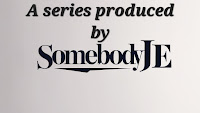Episodul 5
Welcome back to my ongoing series exploring Pedagogy of the Soul by Brazilian author
Ana Dalfovo.
In today’s episode:
How we learn and how we see the world
How do we truly learn? And how do we really see the world?
In this new episode, we step into one of the most powerful questions in Ana Dalfovo’s Pedagogy of the Soul:
“Is learning just absorbing content, or is it the unfolding of who we are?”
Join me as we explore how perception shapes learning, how curiosity unlocks growth, and how reconnecting with our soul changes not only how we learn—but how we live.
This chapter – "How we learn and how we see the world" – is one of the most profound and philosophical in the entire book. Not only does it broaden the pedagogical framework, but it completely breaks it down, reconfiguring learning as a process of awareness, self-discovery, and return to the Self.
🔍 1. Self-observation as a method of writing and learning
The author begins with an act of vulnerability:
> "I am against standardization... I see myself resisting or postponing."
This confession sets the stage for a lively, authentic, non-standardized pedagogy. Ana does not want to write a "technical" book, but a human and free one, where writing becomes part of the process of self-knowledge.
🧠 2. How we learn: the process of imprinting + repetition + emotion
Ana describes the stages of learning very lucidly:
1. We observe the outside world.
2. We repeat what we see.
3. We unconsciously choose what to keep (based on emotion).
4. We automate those behaviors.
5. We come to believe that we are what we have learned.
This description corresponds perfectly with:
the theory of neuroplasticity,
experiential education,
and even some Eastern spiritual perspectives (maya/the illusion of identity).
🪞 3. Learning as mirroring – the loss of the authentic Self
> "The world tells us who we are. They give us tastes, titles, standards..."
Ana shows how we form a mirrored, not authentic, identity.
And the key question arises:
> "Are you an unconscious repetition of others?"
This question becomes the catalyst for an inner process of awakening.
🌀 4. Awakening from autopilot – it's not about denial, but acceptance
> "I took it personally. I was radical. I wanted the truth."
She admits that in the initial stage, she treated this process with harshness and judgment. But then she learns a profound lesson:
> "Making peace with your whole life is the path to liberation."
There is no need to deny the past or your environment—but to honor it as part of your journey.
✨ 5. Every life is a unique divine equation
> "Every life is an equation... the result is YOU in your most perfect imperfection."
This phrase is a poetic summary of her pedagogical philosophy:
There is no failure, only manifestations of divine mathematics.
Even traumas, incongruities, and confusions are part of the formula that leads to self-knowledge.
📏 6. Criticism of classical education – excess of content, void of meaning
> "School knowledge is outdated... it tries to compensate for a void."
Here Ana does not attack school itself, but the rigid form of education:
mechanical learning,
lack of meaning and belonging,
ignoring the inner Self.
💖 7. Central message: Learn to love yourself and recognize your inner Master
> "Every being has the total potential to change the world... just by learning to love themselves."
This sentence is the core of the entire book:
Self-love = the beginning of authentic learning.
The Master is not outside, but inside.
Pedagogy becomes a journey towards self-recognition.
🧭 8. We learn in dualities – and we return to the whole
> "It's that thing... you only know what thirst is when you don't have water."
Life teaches through polarity: love – lack, joy – pain, light – shadow.
But the heart knows the way back. It is the compass.
This is a central idea in Waldorf and Montessori pedagogy, but also in Eastern mysticism.
🧰 9. Inner weapons for evolution:
Faith
Love
Patience
Kindness
Clarity of intention
Permission
Internalization
Surrender (the act of letting go)
Acceptance of oscillation (flow)
This list is a spiritual survival kit for the process of self-learning.
🧩 10. Ancestral wisdom – as a map to the Self
> "All external beliefs and information... are like clues, like a treasure map."
Finally, Ana shows us that even what seemed "imposed" from outside (models, religions, beliefs) can be used as an inner guide, not as a chain.
It is a transformation of vision:
The world becomes a mirror,
Tradition – a map,
Life – an adventure towards rediscovery.
✨ Conclusion
-a chapter about awakening the Self through the learning process
This chapter is about:
becoming aware of who you really are,
understanding how you were programmed,
and releasing that program with love, not struggle.
It is transpersonal, spiritual, deeply human pedagogy.




Comments
Post a Comment